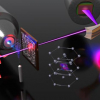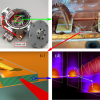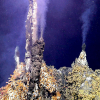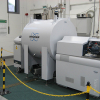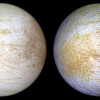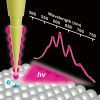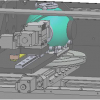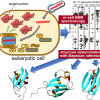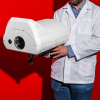Spectroscopy News
Heidelberg University physicists develop new method based on UV photoelectron spectroscopy to show the energetic landscape within solar cells made from organic materials.
Attosecond transient absorption spectroscopy has uncovered the interplay between light absorption and electronic screening which could lead to the development of future optoelectronic devices, energy-efficient electronics, magnetic memory devices, spintronics and new types of solar cells.
The group of Jérôme Faist in the Institute for Quantum Electronics produced a terahertz quantum cascade laser operating without cryogenic cooling.
The technique can identify cancerous thyroid cells with 97 % accuracy, and also showed that subtypes could be identified by their spectral differences.
By being resident on-site at a hydrothermal vent for 12 months, InVADER will capture transient events and provide unprecedented spatial and temporal access to a deep ocean hydrothermal system.
New method developed at the University of Warwick can analyse highly complex mixtures through maintaining almost constant resolving power across the full mass range analysed.
Nominations for the 2019 Norman Sheppard Award are invited.
The new matrix-assisted ionisation in vacuum (MAIV) technique has been used to generate mass spectrometry images for the first time. The technique’s ability to generate multiply charged ions from peptides and proteins facilitates their identification by tandem mass spectrometry.
We are sad to announce that Karl Norris passed away peacefully on 17 July 2019 at the age of 98.
A fast, tuneable quantum cascade laser can cover the fingerprint region in 1 ms.
The secret of how seals are able to spend 90 % of their lives at sea holding their breath, without starving their brains of oxygen, has been revealed using NIR spectroscopy.
Visible spectroscopy has identified deposits of NaCl on Jupiter’s moon Europa.
Researchers at the National Institute of Standards and Technology (NIST) and collaborators have demonstrated a compact frequency-comb apparatus that rapidly measures the entire infrared wavelength region.
A step forward toward achieving nanoscale imaging and spectroscopy with tailored “nanolight”.
Larger semiconductor crystals analysed with an integrating sphere and photoluminescence spectroscopy
Tohoku University researchers use an integrating sphere and photoluminescence spectroscopy to measure the electronic and optical properties of large semiconducting crystals.
Young scientists can apply for laboratory bench space for their own research in “Shimadzu Laboratory World”.
HighChem, provider of mass spectrometry software, has been acquired by Thermo Fisher Scientific.
Biotage and Yingsheng are to collaborate in the Chinese market for clinical mass spectrometry applications.
Nuclear magnetic resonance measurement and state-of-the-art computational science reveal protein structures in higher eukaryotic cells.
Together with partners from research and industry, Fraunhofer IAF has developed a hand-held, QCL-based scanner for hazardous substances as part of the CHEQUERS EU project.


